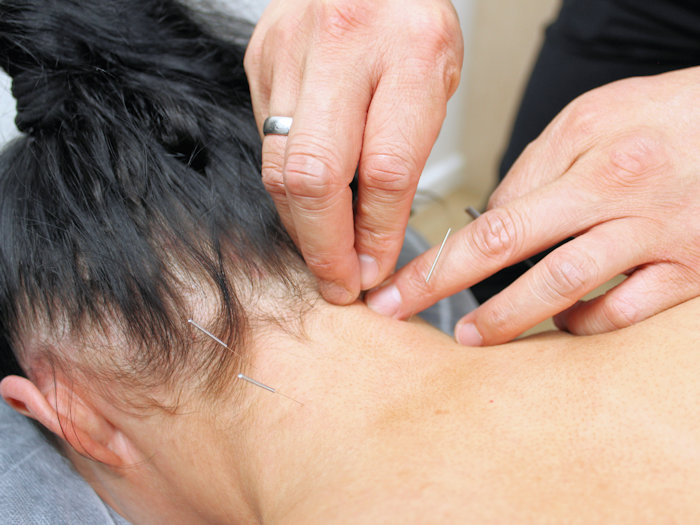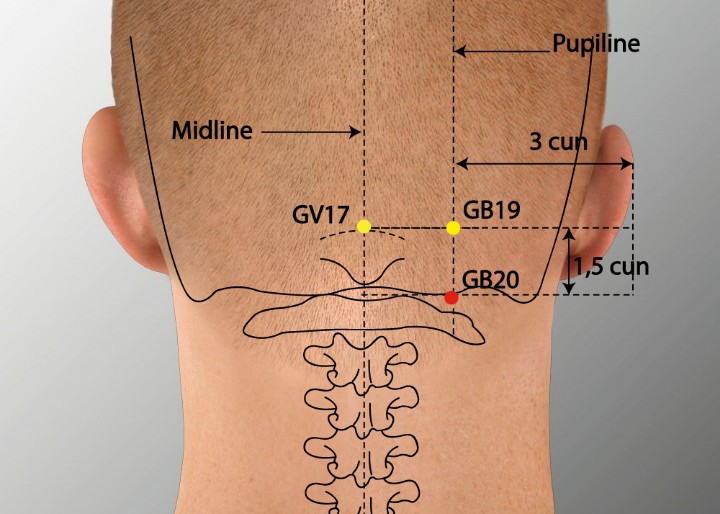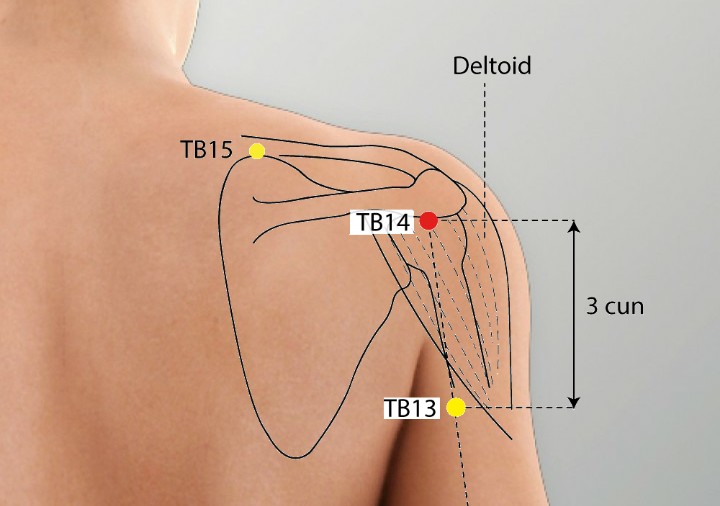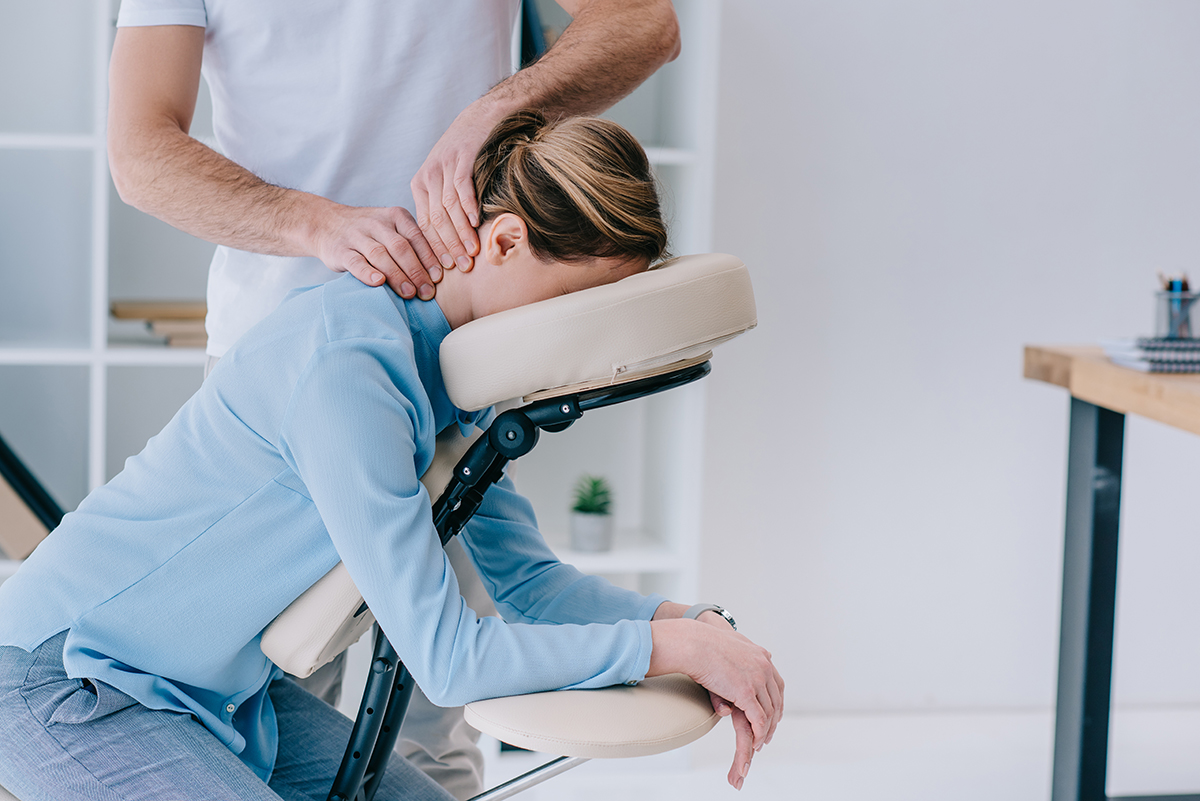Axial Neck Pain and Acupuncture: A Comprehensive Guide to Relief
Axial neck pain, a common condition affecting millions worldwide, is characterized by discomfort or pain localized to the cervical spine without radiating to the arms or shoulders. Whether caused by poor posture, stress, or underlying medical conditions, axial neck pain can significantly impact daily life. Among the various treatment options, acupuncture has gained attention as a natural, holistic approach to managing this condition. This article explores axial neck pain, its causes, and the role of acupuncture in providing relief, with a detailed focus on its effectiveness and key acupoints.
- What is Axial Neck Pain?
- Common Causes of Axial Neck Pain
- Symptoms of Axial Neck Pain
- What is Acupuncture?
- Effectiveness of Acupuncture for Axial Neck Pain
- How Acupuncture Works for Pain Relief
- Scientific Evidence Supporting Acupuncture
- Benefits of Acupuncture for Axial Neck Pain
- Limitations and Considerations
- Key Acupoints for Axial Neck Pain
- 1. Fengchi (GB20)
- 2. Jianjing (GB21)
- 3. Tianzhu (BL10)
- 4. Dazhui (GV14)
- 5. Houxi (SI3)
- 6. Hegu (LI4)
- 7. Jianliao (TB14)
- Combining Acupoints for Optimal Results
- Acupuncture Session Details
- Integrating Acupuncture with Other Treatments
- Choosing a Qualified Acupuncturist
- FAQs About Acupuncture for Axial Neck Pain
- Is acupuncture painful?
- How many sessions are needed?
- Are there risks or side effects?
- Can acupuncture replace other treatments?
- Conclusion
What is Axial Neck Pain?
Axial neck pain refers to pain confined to the neck region, specifically the cervical spine, without extending to the upper limbs or other areas. Unlike radicular neck pain, which involves nerve root irritation and radiating symptoms, axial neck pain is typically musculoskeletal in nature. It may present as stiffness, soreness, or a dull ache, often exacerbated by movement or prolonged positions.
Maybe You Need:

Common Causes of Axial Neck Pain
Axial neck pain can arise from various factors, including:
- Poor Posture: Prolonged sitting, especially with improper ergonomics, strains neck muscles and ligaments.
- Muscle Strain: Overuse or sudden movements, such as whiplash from accidents, can lead to muscle tension.
- Stress: Emotional stress can cause muscle tightness in the neck and shoulders.
- Degenerative Conditions: Conditions like cervical spondylosis or osteoarthritis can contribute to axial neck pain.
- Injuries: Minor injuries, such as sprains or strains, may cause localized pain.
- Lifestyle Factors: Sedentary habits, lack of exercise, or improper sleeping positions can exacerbate symptoms.
Symptoms of Axial Neck Pain
Symptoms vary in intensity and may include:
- Stiffness or reduced range of motion in the neck
- Localized pain or tenderness
- Muscle spasms
- Headaches originating from the neck
- Discomfort that worsens with certain movements or positions
Understanding the root cause of axial neck pain is crucial for effective treatment. While conventional treatments like physical therapy, medications, or surgery are common, acupuncture offers a non-invasive alternative that has shown promise in alleviating pain and improving function.

What is Acupuncture?
Acupuncture is a traditional Oriental medicine (TOM) practice that involves inserting thin, sterile needles into specific points on the body, known as acupoints, to restore balance and promote healing. According to TOM, the body’s vital energy flows through pathways called meridians. Disruptions in this flow can lead to pain or illness. Acupuncture aims to restore harmony by stimulating acupoints, which can influence the nervous system, muscles, and connective tissues.
In the context of axial neck pain, acupuncture is used to reduce pain, relax muscles, improve blood flow, and address underlying imbalances contributing to discomfort. Its growing popularity in Western medicine is supported by research highlighting its efficacy for various pain conditions, including neck pain.
Effectiveness of Acupuncture for Axial Neck Pain
Acupuncture has been extensively studied for its role in managing chronic pain, including axial neck pain. Its effectiveness lies in its ability to address both the symptoms and underlying causes of pain through a holistic approach. Below, we explore the mechanisms, scientific evidence, and benefits of acupuncture for axial neck pain.
How Acupuncture Works for Pain Relief
Acupuncture’s pain-relieving effects are attributed to several physiological mechanisms:
- Endorphin Release: Acupuncture stimulates the release of endorphins, the body’s natural painkillers, which help reduce the perception of pain.
- Nervous System Modulation: By stimulating specific acupoints, acupuncture influences the central nervous system, reducing pain signals and promoting relaxation.
- Improved Blood Circulation: Acupuncture enhances blood flow to affected areas, delivering oxygen and nutrients to promote healing and reduce muscle tension.
- Reduction of Inflammation: Studies suggest acupuncture may reduce pro-inflammatory cytokines, helping to alleviate inflammation-related pain.
- Muscle Relaxation: Acupuncture can relieve muscle spasms and tightness, common contributors to axial neck pain.
Scientific Evidence Supporting Acupuncture
Numerous studies have investigated acupuncture’s efficacy for neck pain, with many focusing on axial neck pain specifically. Here are key findings from recent research:
- Systematic Reviews and Meta-Analyses: A 2016 meta-analysis published in The Journal of Pain reviewed 29 randomized controlled trials (RCTs) and found that acupuncture was significantly more effective than sham acupuncture or no treatment for chronic neck pain, including axial types. Patients receiving acupuncture reported reduced pain intensity and improved quality of life.
- Comparative Studies: A 2018 study in Pain Medicine compared acupuncture to physical therapy for axial neck pain. The acupuncture group showed greater improvements in pain scores and neck mobility after 6 weeks of treatment.
- Long-Term Benefits: Research published in Evidence-Based Complementary and Alternative Medicine (2020) indicated that acupuncture provided sustained pain relief for up to 6 months in patients with chronic axial neck pain, particularly when combined with lifestyle modifications.
- Neuroimaging Studies: Functional MRI studies have shown that acupuncture activates brain regions associated with pain modulation, such as the prefrontal cortex and insula, supporting its role in altering pain perception.
While some studies note variability in outcomes due to differences in acupuncture techniques or patient populations, the overall evidence supports acupuncture as a safe and effective option for axial neck pain, particularly for those seeking non-pharmacological treatments.

Benefits of Acupuncture for Axial Neck Pain
Acupuncture offers several advantages for individuals with axial neck pain:
- Non-Invasive: Unlike surgery or injections, acupuncture involves minimal risk and no downtime.
- Fewer Side Effects: Compared to medications, acupuncture has a low risk of adverse effects when performed by a licensed practitioner.
- Holistic Approach: Acupuncture addresses both physical and emotional factors, such as stress, which can exacerbate neck pain.
- Customizable Treatment: Acupuncturists tailor sessions to individual needs, targeting specific acupoints based on symptoms and underlying causes.
- Complementary Therapy: Acupuncture can be combined with other treatments, such as physical therapy or massage, for enhanced results.
Limitations and Considerations
While acupuncture is generally effective, results can vary based on factors like the severity of neck pain, the skill of the acupuncturist, and the patient’s overall health. Some individuals may require multiple sessions to achieve significant relief, and acupuncture may not be suitable for those with certain medical conditions (e.g., bleeding disorders). Consulting a qualified acupuncturist and discussing treatment goals is essential for optimal outcomes.
Key Acupoints for Axial Neck Pain
In acupuncture, specific acupoints are selected based on the patient’s symptoms, the location of pain, and the underlying TOM diagnosis (e.g., energy stagnation, blood stasis, or muscle tension). For axial neck pain, acupoints are typically chosen along meridians that influence the neck, shoulders, and upper back. Below is a detailed overview of key acupoints commonly used for axial neck pain, their locations, and their therapeutic effects.
1. Fengchi (GB20)
- Location: At the base of the skull, in the hollow between the sternocleidomastoid and trapezius muscles, bilaterally.
- Therapeutic Effects: GB20 is one of the most frequently used acupoints for neck pain. It is known for relieving muscle tension, reducing stiffness, and alleviating headaches caused by neck strain. It also dispels “wind” in TOM, which is associated with pain and spasms.
- Application: Needles are inserted at a slight angle toward the midline of the head. Stimulation of GB20 can promote relaxation and improve cervical mobility.

2. Jianjing (GB21)
- Location: Midway between the base of the neck and the tip of the shoulder, at the highest point of the trapezius muscle.
- Therapeutic Effects: GB21 is effective for relieving shoulder and neck tension, particularly in cases of stress-related axial neck pain. It helps relax tight muscles and improve blood flow to the upper back and neck.
- Application: Needling is done cautiously due to the proximity of the lung, with shallow insertion to avoid complications. GB21 is often combined with GB20 for enhanced relief.
3. Tianzhu (BL10)
- Location: On the back of the neck, 1.3 cun (approximately 1.5 inches) lateral to the midline, just below the occipital bone.
- Therapeutic Effects: BL10 targets neck stiffness and pain, particularly in cases of cervical muscle strain or poor posture. It also helps with occipital headaches and promotes relaxation of the cervical spine.
- Application: Needles are inserted perpendicularly or slightly upward to stimulate the bladder meridian, which runs along the neck and back.
4. Dazhui (GV14)
- Location: On the midline of the back, below the spinous process of the seventh cervical vertebra (C7).
- Therapeutic Effects: GV14 is a powerful acupoint for neck and upper back pain. It strengthens the spine, improves circulation, and reduces inflammation. It is particularly useful for chronic axial neck pain associated with degenerative conditions.
- Application: Needles are inserted perpendicularly, often with moxibustion (heat therapy) to enhance effects.

5. Houxi (SI3)
- Location: On the ulnar side of the hand, in the depression proximal to the fifth metacarpophalangeal joint when making a fist.
- Therapeutic Effects: SI3 is a distal acupoint used to treat neck pain by activating the small intestine meridian, which connects to the neck and shoulders. It is effective for acute neck stiffness and muscle spasms.
- Application: Needling is performed with the hand in a relaxed position, often combined with local points like GB20 for synergistic effects.
6. Hegu (LI4)
- Location: On the dorsum of the hand, between the first and second metacarpal bones, at the midpoint of the second metacarpal bone.
- Therapeutic Effects: LI4 is a versatile acupoint known for its pain-relieving properties. It is used for neck pain associated with tension headaches or stress, as it promotes the release of endorphins and improves Energy flow.
- Application: Needles are inserted perpendicularly, and LI4 is often used as a distal point to complement local neck acupoints.
7. Jianliao (TB14)
- Location: On the shoulder, in the depression posterior and inferior to the acromion when the arm is abducted.
- Therapeutic Effects: TB14 targets shoulder and neck pain, particularly when axial neck pain is accompanied by shoulder stiffness. It helps relax the surrounding muscles and improve range of motion.
- Application: Needles are inserted at a slight angle, often combined with GB21 for comprehensive relief.

Combining Acupoints for Optimal Results
Acupuncturists typically combine local points (e.g., GB20, BL10, GV14) with distal points (e.g., SI3, LI4) to address both the symptoms and underlying causes of axial neck pain. The selection of acupoints is tailored to the patient’s specific condition, such as whether the pain is due to muscle tension, poor posture, or stress. Additional techniques, such as electroacupuncture (applying mild electrical currents to needles) or moxibustion, may be used to enhance outcomes.
Acupuncture Session Details
A typical acupuncture session for axial neck pain involves:
- Assessment: The acupuncturist evaluates the patient’s symptoms, medical history, and TOM diagnosis (e.g., Energy stagnation or blood deficiency).
- Needle Insertion: Sterile, single-use needles are inserted into selected acupoints. Patients may feel a slight tingling or warmth, but discomfort is minimal.
- Duration: Needles are left in place for 15–30 minutes, depending on the treatment plan.
- Frequency: Treatment may involve 1–2 sessions per week for 4–8 weeks, with adjustments based on progress.
Integrating Acupuncture with Other Treatments
For optimal results, acupuncture can be combined with complementary therapies:
- Physical Therapy: Stretching and strengthening exercises can enhance the effects of acupuncture by improving posture and muscle function.
- Massage Therapy: Techniques like myofascial release or trigger point therapy can relieve muscle tension alongside acupuncture.
- Lifestyle Changes: Ergonomic adjustments, stress management, and regular exercise can prevent recurrence of axial neck pain.
- Medications: In some cases, acupuncture may reduce the need for pain medications, but it can be used alongside them if necessary.

Choosing a Qualified Acupuncturist
To ensure safe and effective treatment, select a licensed acupuncturist with training in TOM or medical acupuncture. Verify their credentials through organizations like the National Certification Commission for Acupuncture and Oriental Medicine (NCCAOM). Discuss your symptoms, treatment goals, and any medical conditions to create a personalized plan.
FAQs About Acupuncture for Axial Neck Pain
Is acupuncture painful?
Acupuncture is generally well-tolerated, with minimal discomfort. Patients may feel a slight pinch or tingling during needle insertion, but pain is rare when performed by a skilled practitioner.
How many sessions are needed?
The number of sessions varies based on the severity and duration of neck pain. Most patients notice improvement after 4–8 sessions, with maintenance sessions as needed.
Are there risks or side effects?
Acupuncture is safe when performed by a licensed practitioner. Minor side effects, such as bruising or temporary soreness, may occur but are uncommon.
Can acupuncture replace other treatments?
Acupuncture can be a standalone or complementary treatment, depending on the individual’s needs. Consult a healthcare provider to create a comprehensive treatment plan.

Conclusion
Axial neck pain can significantly affect daily life, but acupuncture offers a promising, natural solution for relief. By targeting key acupoints like GB20, BL10, and LI4, acupuncture addresses pain, muscle tension, and underlying imbalances, supported by scientific evidence and centuries of TOM practice. Its non-invasive nature, minimal side effects, and ability to complement other therapies make it an attractive option for those seeking holistic care. If you’re struggling with axial neck pain, consult a qualified acupuncturist to explore how this time-tested therapy can help you regain comfort and mobility.
For more information or to find a licensed acupuncturist near you, visit reputable resources like the NCCAOM website or consult your healthcare provider. Take the first step toward pain-free living with acupuncture today.
Fuji Wellness:
- Address: 132-0031 Matsushima 1-chome, 21-14, Tokyo, Japan
- Chat with us: Click here
- Email: sunnyphamsensei@gmail.com







